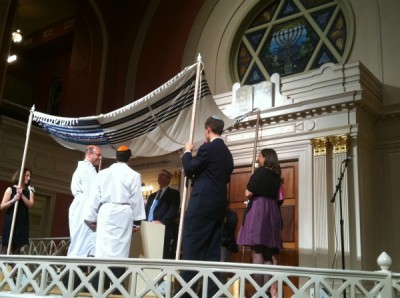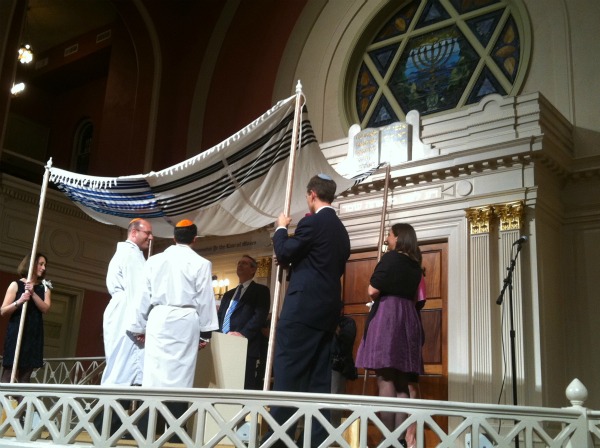
“Orthodoxy’s greatest innovation was its decision to stop innovating.”
These were the words of a friend of mine in high school, a non-Orthodox student at my Modern Orthodox high school, voicing his frustration at Orthodoxy’s seeming inability to develop and adapt to (post-)modern values. When I published my last article, one of the largest criticisms was that I was asking Orthodoxy, which bases itself, by definition, on being unchanging, to change.
This is not true. Judaism changes, and Orthodoxy, which claims to be an heir (or the one true heir) of Judaism, also changes. Change is the reason that, in the mornings, I pray every day as opposed to offering an animal as a daily sacrifice on an altar I built in my backyard. It is the reason that I turn to my friendly neighborhood rabbi for advice, as opposed to a priest or a prophet as the Israelites did in biblical times. Indeed, change is the reason I am a Jew and not an Israelite.
Of course, change happens and has to be measured appropriately. The conversations that happen outside the Orthodox world are not necessarily ones that happen in the Orthodox world, and the metrics we use for measuring that change will necessarily be different. I’m not talking about “slow-paced” or “fast-paced” change; instead, I’m talking about developing ways to talk about how innovation occurs within Orthodoxy in a meaningful way.
This innovation occurs everywhere, even within communities who are least likely to admit it. We can look at many of the recent developments in the most insular, haredi communities, as innovations meant to section themselves off from (post-)modernity. When we look at these with our (post-)modern, progressive sensibilities, our first response is to see this as a sign of back-pedaling, but it isn’t: we cannot just measure them according to our metrics of progress. Theirs is a march away from (post-)modernity, but it is not a march backward; to them, it is a march forward and toward the realization of a community and an ideal that is what they believe to be expressive of God’s will. The fact that Orthodox women recite the blessing of “she-‘asani kirzono” (“that [God] made me in [God’s] will”) was also, at one point, an innovation, considering that we have discovered manuscripts of liturgies that did not include this prayer.
And change occurs in Modern Orthodoxy as well, in accordance with the trends of (post-)modernity. What is considered a “progressive” Modern Orthodox community would not be considered “progressive” at all by Conservative standards, because Orthodox, Conservative, and Reform Judaisms are all operating on different playing fields.
When I call upon Modern Orthodoxy to change, it is not only because I believe that Modern Orthodoxy has the capacity to change, it is because these changes are already happening, albeit in small, quiet, and incremental steps that have a long way to go before they become mainstream. Marriages for queer couples are already taking place, but only by one rabbi, and the ceremony has a far way to go before it enters the mainstream. When I talk about Orthodoxy having the capacity to change and be accepting of queer people, I am talking about not having to look in specifically LGBTQ spaces for acceptance. Instead, I should be able to find them in the rest of the Modern Orthodox community.
When I talk about the need for a future for young queer Orthodox Jews, and my claim that Orthodoxy is not yet ready for me, I claim that what I read about in newspapers has yet to catch on in the mainstream — gay rabbis should not be the only ones officiating same-sex wedding ceremonies. While I am able to find individual Orthodox (and Conservative, and Reform, and Renewal) communities where I feel comfortable, Orthodoxy still lacks the institutional support for someone coming out of the closet.
Change in Modern Orthodoxy also takes other forms: when we talk about being accepting, it has to come from a desire to innovate within the framework prescribed by the Jewish legal tradition. It is this innovation that allows for us to even consider the notion of a “Shabbos App” (which, for the record, I still maintain is a hoax and that we are all being trolled by some Orthodox Jews who are all having a good laugh at our expense). It means opening ourselves up to conversations about modern notions of what heternormativity is and how it manifests itself in our synagogue lives. It means harnessing some of the flexibility in liturgy that we see with earlier liturgies and seeing how we can make sure we are not just praying for men and their wives, but for people and their families. It means making adaptations so that when I pray for the well-being of my future spouse and I, I can actually mean it, as opposed to going through the motions of a liturgy that does not apply to me.
All of this Modern Orthodoxy can do; all of this it should do. But, first, it needs to get over the fear of being called “innovative.” We already see this in fringe movements; now, let’s begin to see these in the mainstream.
Amram Altzman is a student at List College.

